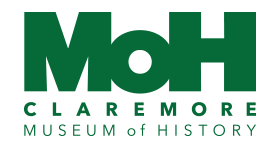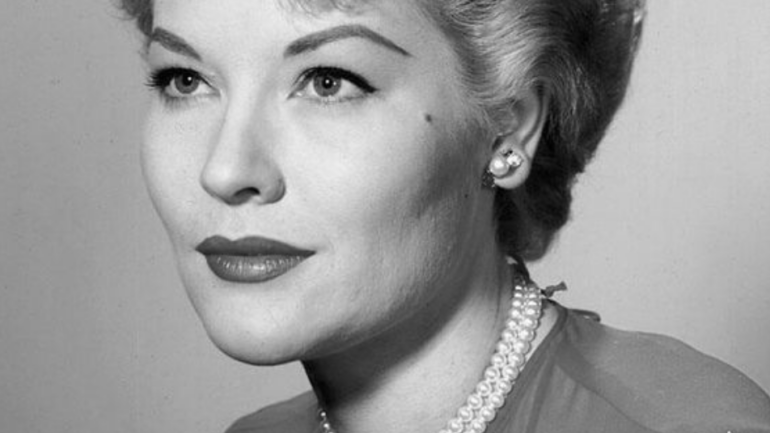Telling the History of Claremore…one story at a time
THE STORY OF “OOWALA” IN COOWEESCOOWEE DISTRICT
Oowala is the name of a community and the name of a Claremore street, but behind the name is the story of a family and a pioneer of the area which now comprises Rogers County. The following history of the name “Oowala” was written by W. R. Harper and appeared in the November 11, 1930 and the June 28, 1953 editions of the Claremore Progress.
The story of Oowala is in reality the life story of a man who had much to do with the progress and education of the Cherokee people and the result of his work is now seen in various parts of the country.
About the time America gained her independence from the British crown a man named Casper Lipe settled in the Mohawk Valley in the state of New York. The family consisted of his wife and one son, John, who united in marriage with the daughter of another pioneer family and in due time became the father of a male child who he called Oliver.

Oliver Lipe, the original Oowala, started west about 1835 and in due time found employment with a contracting firm at Boonesville, Missouri. The nature of his employment took him first to Atlanta, Georgia, and later to Athens, Tennessee, from which place he rode on horseback to Tahlequah, Indian Territory, where he was employed as a carpenter on the first capitol building of the Cherokee Nation.
Here he met and in 1839 married a half blood Cherokee girl name Katherine Gunter, who had attended Mission schools in Tennessee and Georgia and had been converted to Christianity under the preaching of a man named John B. McFerrin, later a Methodist Bishop.
In those days a white man who married an Indian girl with the approval of older members of the tribe was formally adopted and given an Indian name…and an Indian name usually “means something.”
Indian women often prepared an appetizing dish or article of food from the livers and lights (lungs) of a hog, seasoned with pepper, salt, sage, etc. which they called, “Oo-wa-la.”
When the time came for this white man to be adopted and given his tribal name, an old full-blood asked, in his native language, “Gah-taw-doo-tah?” The interpretation is, “What’s his name?” The half-breed interpreter who evidently used the English instead of the Indian language, replied, “His white man name is Lipe.” To the old Indian the word “Lipe” meant nothing so he understood it as “Lights”, principal ingredient in a favorite article of food, and responded with a guttural sound, “Oowala.”
This amusing association of sounds and ideas, which is characteristic of the race, appealed to the audience and the name “Oowala” was bestowed upon him individually and handed down, by continued custom as a family name for his descendents, many whom still live in Rogers County.
Being a man of culture and high ideals he set about to make better social and intellectual conditions among the people of his adoption and the result of his work is still in evidence. He and his Indian wife were very popular among the Cherokee people…they lived happily together for many years and became wealthy. Mr. Lipe acquired a fair understanding of the language of the Cherokees but was never able to speak it with any degree of fluency…a matter which he regretted.
Once, while riding by the place of holding court, he was requested by the judge, Rev. Jesse Bushyhead, grandfather of Dr. J. C. Bushyhead to keep the records of a trial then about to begin…the trial of a man charged with stealing cattle (who was convicted and given fifty lashes on the bare back with a wet rope.) The service thus rendered by Mr. Lipe were so efficient and satisfactory that he was later called upon to superintend the establishment of high schools for Cherokee children and in that capacity suggested an outline of study which was adopted and carried out with little change, until the Indian schools were taken over by the general government several years after his death.
 Oliver and Katherine Gunter Lipe became the parents of two sons, DeWitt Clinton (commonly called Major) and Clark Casper (usually called Jake) both of whom settled with their families in what is now Rogers County soon after the close of the Civil War…they, with their father, having previously served in the confederate army.
Oliver and Katherine Gunter Lipe became the parents of two sons, DeWitt Clinton (commonly called Major) and Clark Casper (usually called Jake) both of whom settled with their families in what is now Rogers County soon after the close of the Civil War…they, with their father, having previously served in the confederate army. Jake Lipe’s home was on the west side of the Verdigris, while that of D. C. Lipe was on the east side about seven miles north of this city where he established a country store and a post office which he called “Claremore” in memory of a chief of the Osages who was defeated by Cherokees at Claremore Mound.
The Lane, Musgrove, McClelland, Bean, Foreman and other well known families being attracted by the fertile soil and “good range” set up homes, farms or ranches in the community and when the National Board of Education established a public school for their children, it was given the name “Oowala” in honor of the Lipe family.
When the Frisco railroad was built, the post office was moved to the new town of Claremore but Oowala school was continued at or near the original location until statehood and when our first County Superintendent, B. H. Hester, set out the new districts and a brick building could be erected through a bond issue, the old name was retained, “Oowala school” although it was some distance from the original building.
Before statehood C. C. “Jake” Lipe served as Clerk of the Cooweescoowee District court (Cherokee Nation) while “Major” D. C. Lipe was the first County Clerk of Rogers County.
If you meet a mixed-blood Cherokee whose English name is “Lipe”, you may assume that the family name in Cherokee is “Oowala.”



